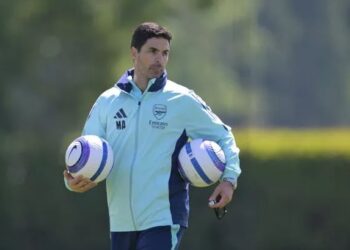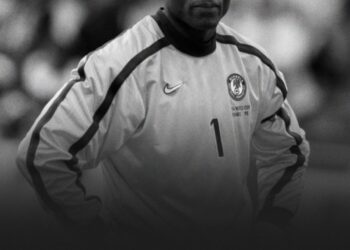The First Stone for Real Madrid City Was Laid 21 Years Ago Today
On May 12, 2004, a vision that would forever transform the landscape of modern football took its first step toward reality. On this day, 21 years ago, the first stone of Real Madrid City — officially known as Ciudad Real Madrid — was laid in Valdebebas, on the northern outskirts of Madrid. It marked the beginning of what would become one of the most advanced sports complexes in the world, a symbol of ambition, innovation, and the club’s unrelenting pursuit of excellence.
The ceremonial laying of the first stone was not just a construction milestone; it was a declaration. Real Madrid, already the most successful football club in history at that time, was looking far beyond the pitch. The idea was to create a world-class training and operations center that would solidify its status as a global football powerhouse for decades to come.
The ceremony was presided over by then-club president Florentino Pérez, a man with a clear vision for the future of Real Madrid. Accompanied by club legends, board members, and local authorities, Pérez placed the symbolic first stone — a gesture that marked the beginning of a bold, transformative project. His vision extended beyond winning titles. He aimed to build a home for Madridismo, one that would foster both elite performance and enduring club values.
Covering over 1.2 million square meters, Real Madrid City is now the largest sports facility ever built by a football club. It’s not just a training ground — it’s a sprawling, high-tech headquarters where every level of the club, from the first team to youth squads, prepares and grows. The facility includes multiple grass and artificial pitches, medical centers, press rooms, dormitories, and fitness centers. There’s even a residence for academy players, who live and study on-site as they chase their dreams of playing for Los Blancos.
When it officially opened in 2005, just a year after that symbolic first stone was laid, it quickly became clear that this was more than just an upgrade. It was a game-changer. The first team now trained in a state-of-the-art environment tailored to elite performance, while youth players developed in one of the best football environments anywhere in the world.
But the impact of Real Madrid City goes beyond sport. The project was part of a strategic plan that also included the redevelopment of the old Ciudad Deportiva on Paseo de la Castellana — land that was sold to fund the new facilities and pay down club debt. That move, though initially controversial, proved to be a masterstroke. It stabilized the club financially and gave rise to an infrastructure that has sustained over two decades of success, including numerous La Liga and Champions League titles.
The facility has evolved continually over the years. In 2020, as the COVID-19 pandemic disrupted global football, Real Madrid City showed its versatility. With the Santiago Bernabéu under renovation, the Alfredo Di Stéfano Stadium within the complex became the first team’s home ground for several months. Matches were played behind closed doors, but the temporary move showcased how complete and professional the Valdebebas setup truly is.
In 2023, Real Madrid announced additional upgrades to the complex, including expanded women’s team facilities, upgraded technology centers, and new areas for the club’s growing digital and business operations. Today, it’s not just a place where football is played — it’s where the future of the club is continuously being shaped.
The investment in infrastructure has paid off handsomely. The success of Real Madrid’s academy, known as La Fábrica, has only grown since the move to Valdebebas. Talents like Dani Carvajal, Nacho Fernández, and Lucas Vázquez are just a few examples of homegrown players who rose through the ranks and became vital members of the senior squad.
As Real Madrid looks ahead, the foundations laid 21 years ago remain as relevant as ever. Real Madrid City is now central to the club’s identity, representing a blend of tradition, innovation, and excellence. It serves as a daily reminder that greatness is built stone by stone, decision by decision.
Today, as we look back at that symbolic first stone laid in 2004, we see not just the birth of a training facility — but the beginning of a new era. One that continues to define what it means to wear the white shirt.











